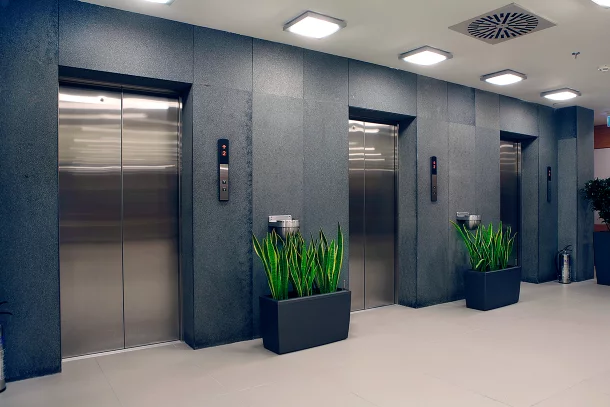Exploring the World of Elevators: Usual Problems Faced by Numerous Lift Systems
As we navigate with the vertical transport systems of modern-day buildings, lifts stand out as an important part of our daily lives. From hydraulic lifts to grip systems and machine-room-less designs, each lift kind comes with its collection of common problems.
Hydraulic Lifts
Hydraulic lifts, typically favored for low-rise buildings, utilize fluid stress to regulate the movement of the elevator automobile (lift repair companies). This device involves a hydraulic pump pushing oil into a cyndrical tube, creating the lift to move in the desired direction. While hydraulic lifts are recognized for their quiet and smooth operation, they do include their very own collection of usual problems
One widespread problem with hydraulic elevators is oil leakage. The seals in the hydraulic system can use out gradually, bring about oil infiltration. This not only creates a mess but can also impact the elevator's performance if left unaddressed. Furthermore, problems with the control system, such as malfunctioning shutoffs or a malfunctioning pump, can trigger interruptions in the lift's motion.
Normal upkeep and timely repair services are necessary to make sure the smooth functioning of hydraulic lifts. By addressing these common problems proactively, structure proprietors can lessen downtime and guarantee the safety and efficiency of their upright transport system.
Traction Elevators
When taking into consideration upright transportation systems in buildings, an additional typical type aside from hydraulic lifts is the traction elevator. Grip elevators run making use of a system of ropes and counterweights that move the lift cars and truck by grasping onto the hoist ropes. This mechanism permits smoother and quicker vertical transport compared to hydraulic systems.
Among the typical issues encountered by traction lifts is rope wear. The consistent motion of the ropes within the grip system can cause damage in time, possibly triggering the lift to malfunction or become harmful for use. Normal assessments and upkeep of the ropes are necessary to guarantee the lift's proper performance and safety.
One more concern that traction lifts may come across is related to the control system. Issues with the control system can lead to problems such as irregular movement, hold-ups in response times, or perhaps full shutdowns. Routine screening and maintenance of the control system are vital to avoid such concerns and ensure the elevator's integrity.
Machine-Room-Less (MRL) Elevators

One of the vital elements of MRL elevators is the compact gearless grip maker that is set up within the hoistway. This machine successfully drives the lift auto without the demand for large equipment located in conventional grip lifts. Furthermore, MRL elevators normally make use of a counterweight system to stabilize the vehicle, more improving their power effectiveness.
Regardless of their advantages, MRL elevators might face difficulties connected to maintenance and repair service due to the restricted room for tools installation. Access for servicing components within the shaft can be limited, needing specialized training for technicians. Appropriate upkeep timetables and regular evaluations are vital to ensure the continued smooth operation of MRL elevators.
Overloading and Weight Limitation Issues
Overloading and weight restriction concerns are critical concerns in lift procedures. Lift makers style lifts with specific weight capacities to ensure guest safety and security and tools durability.
When elevators are overloaded, it places too much stress on the motor, cables, and various other elements, potentially causing breakdowns or failures. If they spot excess weight, safety devices such as sensors and overload sensing units are in location to avoid lifts from moving. Additionally, going beyond weight limitations can lead to boosted energy intake and deterioration on the lift system.
To alleviate overloading concerns, building supervisors ought to plainly show weight restrictions in elevators and enlighten residents on the importance of adhering to these constraints - lift repair companies. Routine upkeep checks by qualified professionals can likewise aid guarantee that lifts are operating within risk-free weight parameters. By attending to overloading and weight restriction issues proactively, structure proprietors can enhance lift safety and effectiveness
Electric System Failings
Exceeding weight limits in elevators can not only lead to mechanical problems however additionally potentially add to electrical system failures within the lift facilities. Electrical system failures are a vital worry in lift operation, as they can cause unexpected shutdowns, malfunctions, or also safety and security threats.
In addition, power rises or variations in the electric supply can likewise interrupt the elevator's procedure, influencing its efficiency and security. These electrical disruptions can harm lift repair near me sensitive elevator parts such as control board, circuit card, or sensors, leading to system failings. Normal maintenance and evaluations are crucial to identify and resolve prospective electrical concerns immediately, guaranteeing the effective and safe procedure of elevator systems. By adhering to weight restrictions and carrying out regular electrical system checks, building proprietors can reduce the threat of electrical failings in lifts.
Final Thought

Hydraulic lifts, typically chosen for lift repair near me low-rise structures, use fluid stress to manage the movement of the lift vehicle.When considering upright transport systems in buildings, another typical kind aside from hydraulic lifts is the traction lift. Traction elevators run using a system of ropes and counterweights that move the lift vehicle by clutching onto the hoist ropes. Unlike conventional lifts that require a different machine space to house the tools, MRL elevators incorporate most of the elements within the shaft, removing the need for a specialized machine space.In verdict, elevators deal with usual issues such as hydraulic breakdowns, grip system failures, and electrical system issues.
Comments on “Leading Lift Companies in London: Delivering Exceptional Service and Assistance”